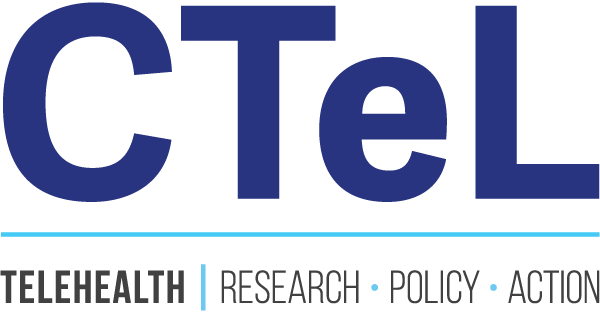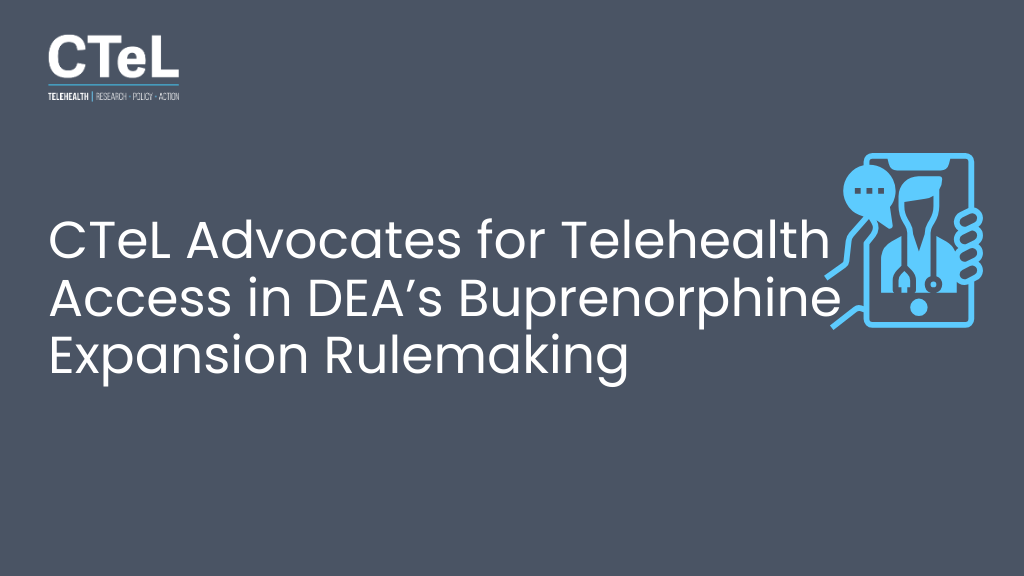CTeL Advocates for Telehealth Access in DEA’s Buprenorphine Expansion Rulemaking
CTeL has officially submitted its comment letter to the Drug Enforcement Administration (DEA) in response to Docket No. DEA-948 - Expansion of Buprenorphine Treatment via Telemedicine Encounter and Continuity of Care via Telemedicine for Veterans Affairs Patients. This rule represents a pivotal shift in how telemedicine can be leveraged to address opioid use disorder (OUD) treatment, and CTeL is committed to ensuring that telehealth remains an accessible and effective tool for patients and providers.
Telehealth’s Proven Success in OUD Treatment
Since 2020, telehealth has transformed healthcare accessibility, particularly for patients struggling with opioid use disorder. During the pandemic, regulatory waivers allowed providers to prescribe medications for opioid use disorder (MOUD) like buprenorphine via telehealth. These flexibilities resulted in increased access to treatment, improved patient retention, and enhanced quality of care—outcomes that CTeL strongly supports making permanent.
CTeL emphasized in its letter that maintaining telehealth access to MOUD is crucial, especially given the 14.5% decrease in drug overdose deaths between June 2023 and June 2024. CTeL stated:
“After seeing the success of expanded telehealth options since 2020, long-term/permanent implementation of many of these waivers is essential in the interest of promoting greater access to high-quality healthcare.”
Key Policy Concerns: PDMP Requirements
While CTeL supports the expansion of buprenorphine treatment via telemedicine, the organization raised concerns about the Prescription Drug Monitoring Program (PDMP) check requirement in the proposed rule. The challenge lies in PDMP interoperability between states, which could create unnecessary barriers to care. CTeL pointed out that some jurisdictions, such as California, Guam, and the Northern Mariana Islands, do not participate in interstate PDMP data sharing, making it difficult for telehealth providers to comply with the rule.
“We encourage the DEA and HHS to delay or remove this requirement until these issues are resolved.”
CTeL’s Research: Telehealth Does Not Increase Drug Diversion Risk
CTeL also presented findings from its recent study on telehealth and overdose rates, reinforcing that telehealth does not contribute to increased drug diversion risks. The study analyzed telehealth policies in Kansas vs. Missouri and Illinois vs. Indiana, demonstrating a positive impact on reducing overdose rates:
Kansas: A 1.28 per 100,000 reduction in overdose rates after telehealth payment parity was implemented in 2019.
Illinois: A 2.16 per 100,000 reduction following similar policy changes in 2021.
This research supports CTeL’s assertion that telehealth remains a safe and effective modality for OUD treatment, and unnecessary restrictions could harm patient access.
Looking Ahead: Protecting Access to Telehealth
CTeL’s advocacy ensures that telehealth remains a viable solution in combating the opioid epidemic. The organization urges the DEA and HHS to prioritize patient access and finalize the telehealth flexibilities introduced during the COVID-19 pandemic.
As this rulemaking progresses, CTeL remains committed to providing evidence-based insights that shape the legal landscape of digital health. For more information or to read the full CTeL comment letter.


